
Family Vacation Destinations in Sanctuaries
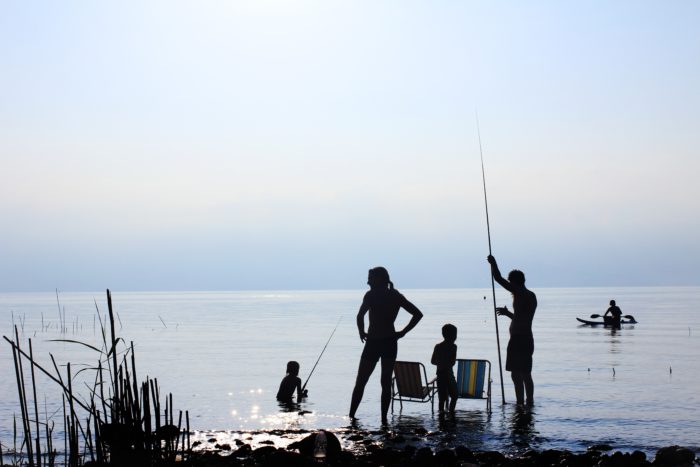
Photo credit: Adam Sherez
Planning for your next family vacation can never begin too soon. But with so many options, this task can be daunting. One thing is certain: sun and sand is a must.
You’re in luck! Visiting a national marine sanctuary will give you all that and more. These seven holiday destinations are not just picturesque but have a crucial role in conservation, cultural protection and scientific advancement. Not only will you get some R&R and beautiful views but you will help support local economies and ocean conservation.
Of course, on any visit to a sanctuary it is always important to seek out tour operators that promote responsible and sustainable diving, snorkeling, fishing, and boating practices to reduce the impact of these activities on ecosystems. Always practice good ocean etiquette.
Florida Keys
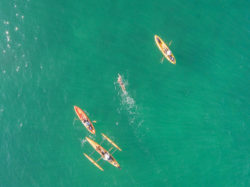
Photo credit: David Gross
Blue waters, white sandy beaches and vibrant coral reefs are the perfect backdrop for you family vacation photos. Beginning just south of Miami, Florida Keys National Marine Sanctuary protects 2,900 square nautical miles of waters surrounding the Keys. Those that love the water can snorkel or dive and explore the third largest barrier reef in the world, including a series of shipwrecks, known as Shipwreck Trail. No diving license? No problem! Families can try SNUBA, a safe and user-friendly way to breath underwater without wearing dive gear. While the Keys are known for water activities, there are many land activities as well. Kids will love the touch tanks at the Key West Aquarium or meeting rescued sea turtles at the Turtle Hospital in Marathon Key.
In the Keys, look for tour operators that are Blue Star recognized for responsible and sustainable tourism.
Channel Islands
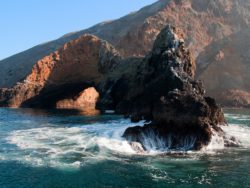
Photo credit: Robert Schwemmer_NOAA
Warm and cool currents that surround the five islands of Channel Islands National Marine Sanctuary provide a habitat for an abundance of wildlife. Start at the visitor’s center and aquarium to learn about the importance of the Sanctuary and visit the aquarium where kids (and adults) can touch and feel marine life. Families can enjoy a leisurely cruise to spot dolphins, whales, sea birds and much more. The clear waters allow people to view giant kelp forests, home to numerous populations of fish and invertebrates. Spend even more time on the water and take a kayak tour to explore the sea caves.
Olympic Coast
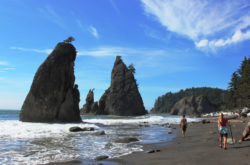
Photo credit: Karlyn Langjahr_NOAA
Get away from crowds and visit the shoreline of the rugged Olympic Peninsula coastline in Olympic Coast National Marine Sanctuary. The sanctuary covers 3,188 square miles of marine waters, and 65 miles of the shoreline overlap with Olympic National Park. This destination is good for families that enjoy hiking, backpacking and camping, and you can find information for permit requirements and restrictions at the Olympic National Park Wilderness Information Center. Tidepooling and wildlife watching are excellent low-key activities that allow people to discover the animals that inhabit this sanctuary.
Greater Farallones
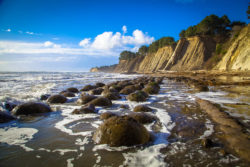
Photo credit: Matt McIntosh_NOAA
With a diverse array of marine habitats, Greater Farallones National Marine Sanctuary, located northwest of San Francisco Bay, is a jewel of the northern California coast. Part of UNESCO Golden Gate Biosphere, it is the only place in the U.S. where land, sea and urban areas meet, creating and endless array of activities, both on land and in the water. Whether it’s boogie boarding or learning to surf at Bolinas Beach, hiking and horseback riding at Salt Point, or exploring coastal trails at Pigeon Point Lighthouse & Reef, visiting Greater Farallones National Marine Sanctuary will provide an unforgettable experience. Stop by the visitor’s center for many interactive exhibits, including a 100,00 gallon tank and displays that explore the migration patterns of sea turtles and sharks.
Thunder Bay
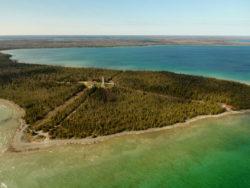
Photo credit: NOAA and Brian Taggart_Oceans Unmanned
Are you a shipwreck fanatic? This is the place for you! In the northwestern part of Lake Huron and along the shores of Alpena, Michigan, Thunder Bay National Marine Sanctuary is located next to “Shipwreck Alley,” the name given to the most perilous stretch of water in the Great Lakes. This area is home to over 100 discovered shipwrecks — and most likely even more undiscovered — due to the unpredictable weather, murky fog banks, sudden gales, and rocky shoals that caused the destruction of many ships. Visitors can explore this nationally-significant, diverse shipwreck collection through glass bottom cruise tours. The Great Lakes Maritime Heritage Center features many interactive exhibits, including a shipwreck artifact gallery, a theatre that shows films daily, a community boat-building center and plenty more. Other activities include fishing trips, tours of the Thunder Bay Island Lighthouse and picnicking at Starlite Beach.
Monterey Bay
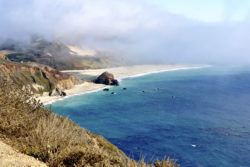
Photo credit: Katie Holmes_NOAA
From rocky shores to sandy beaches and idyllic estuaries, Monterey Bay, also known as the “Serengeti of the Sea,” is a central hub of diverse marine ecosystems and preservation. The sanctuary covers 276 miles of shoreline, stretching from Marin to Cambria. Strolling on the array of beaches or kayaking through the wetlands, you will be provided opportunities to experience the vast array of marine life, birds, fish and invertebrates, as well as many coastal landscapes. Kids can enjoy looking for sea lions, otters and seals playing the the ocean or find the smaller creatures that inhabit the rocky tide pools. Book a cruise for some of the best whale watching in the world.
Monitor

Photo credit: Stephen Sellers_NOAA
If you find yourself heading down to the Outer Banks of North Carolina, why not take a pit stop and dive into the history of the USS Monitor. Protected by Monitor National Marine Sanctuary, this iconic shipwreck lies 240 ft under the surface of the ocean. Though some wrecks can be seen from shore, by snorkeling or scuba diving, the remote location of the Monitor make it difficult for most to visit the wreck. But, good news! Museums in Virginia and North Carolina allow a full immersion into the Monitor’s history, including the official Mariners’ Museum in Newport News, Virginia and three partner museums in North Carolina. Both the Graveyard of the Atlantic Museum and the North Carolina Maritime Museum in Beaufort feature more than 200 large and small artifacts and interactive exhibits. Don’t miss out on a live dive show that houses a one-third scale ship at the North Carolina Aquarium on Roanoke Island. Complete your experience by driving down Highway 12 along the Outer Banks Maritime Heritage Trail that features a series of lighthouses, wildlife, shipwrecks and other features.
